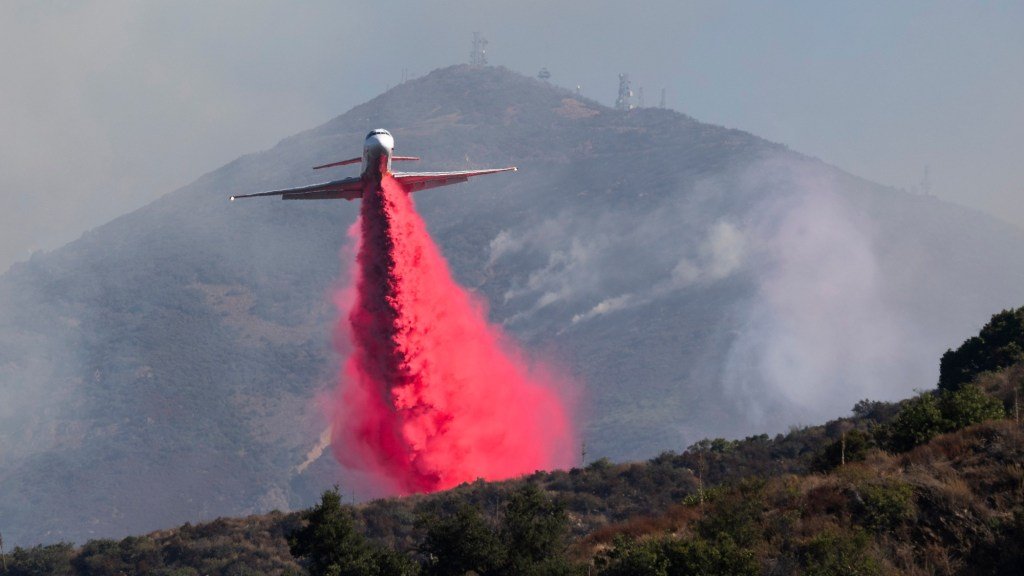California’s AI Chatbot: A New Tool in Wildfire Management or a False Sense of Security?
The sky darkened over San Bernardino County as residents prepared for yet another wildfire season. In the midst of sirens and swirling ash, one glimmer of hope emerged: a chatbot developed by the California Department of Forestry and Fire Protection, known as Cal Fire. Marketed as a revolutionary tool to provide critical fire prevention resources, the chatbot has captured the attention of both officials and residents. However, as the technology rolls out, questions linger about its efficacy and the readiness of governmental agencies to harness the power of artificial intelligence in high-stakes scenarios.
The Promise of AI in Emergency Management
California is no stranger to wildfires, with devastating blazes becoming more frequent and intense. In response, Governor Gavin Newsom’s 2023 executive order set the stage for accelerated adoption of generative artificial intelligence across state agencies, promising improved efficiency and immediate access to vital information. The Cal Fire chatbot, launched under this initiative, aims to give Californians near-real-time emergency data in an era where every second counts.
“In times of crisis, accurate information can be a matter of life and death,” noted Melissa Ortega, a public policy expert at Stanford University. “When AI can streamline information dissemination, it holds transformative potential.” The chatbot is intended to help users with essential topics, including current fire conditions, preparedness tips, and evacuation protocols.
Initial Findings: Accuracy Issues Emerge
Despite the chatbot’s noble aims, the effectiveness of its implementation raises significant doubts. In inquiries made by CalMatters, the chatbot exhibited inconsistencies and outdated data, prompting concerns among experts about its reliability.
- Inaccurate containment reporting: When asked about the containment status of an active fire, the chatbot provided information that was six days outdated.
- Variable response quality: The AI gave different answers based on slight variations in question phrasing, making it unreliable for urgent queries.
- Inability to provide evacuation order details: The chatbot inconsistently responded to questions pertaining to evacuation orders, sometimes failing to answer entirely.
“A chatbot designed for emergencies must be both accurate and consistent,” emphasized Mila Gascó-Hernandez, a research director specializing in technology in government. “People won’t think about how to best phrase their questions when their lives are at stake.”
Testing the Bot: A Deep Dive
The essence of the chatbot’s functionality lies in its dependence on Cal Fire’s website and its dedicated resource platform, ReadyForWildfire.org. However, Cal Fire’s leadership acknowledges that the chatbot requires ongoing refinement. Issac Sanchez, deputy chief of communications for Cal Fire, noted that minor inquiries during testing had led to some inaccuracies. “We’re aware of the challenges and are currently enhancing the bot’s responses,” he said.
During the initial testing phase, Sanchez and his team assessed queries they anticipated the public might pose. However, as reports showed, while the bot managed to provide accurate answers regarding basic agency information, its shortcomings in more complex requests raised eyebrows. “A lack of consistency in urgent contexts can have severe implications,” Gascó-Hernandez pointed out.
Expert Views on Best Practices
According to experts, proper evaluation of AI systems should not be an afterthought; it should be an integral part of the deployment strategy. “Before selecting a vendor, questions about a tool’s performance must be established,” noted Daniel Ho, a law professor specializing in AI governance. He advocates for benchmarks set by independent entities that can objectively assess the chatbot’s performance ultimately aligning with the needs of users.
The disconnect between innovation and practical utility in this case highlights a critical lesson: engaging the public before implementation can significantly impact the success rate of new technologies. Gascó-Hernandez argued for pre-launch engagement with community members to identify the most common questions they might have about wildfire responses. “This ensures that the final product suits the users it intends to serve,” she said.
The Road Ahead: Is Patience Enough?
As Cal Fire continues to refine its chatbot through ongoing user feedback, Sanchez remains optimistic. “The big message we want to get across is patience,” he said, highlighting a commitment to continuous improvement. Yet, experts caution against complacency. The pressing nature of disaster response demands a robust technological backbone that can perform flawlessly under pressure.
In a state grappling with increasingly severe wildfire threats, the stakes are too high for the community’s safety to depend on a chatbot that intermittently falters. As the Cal Fire initiative unfolds, it serves as both a trial and a cautionary tale about the intersection of technology and emergency management. Residents standing at the precipice of danger deserve more than promises; they require tools that can deliver information accurately and promptly, especially when their lives depend on it.





